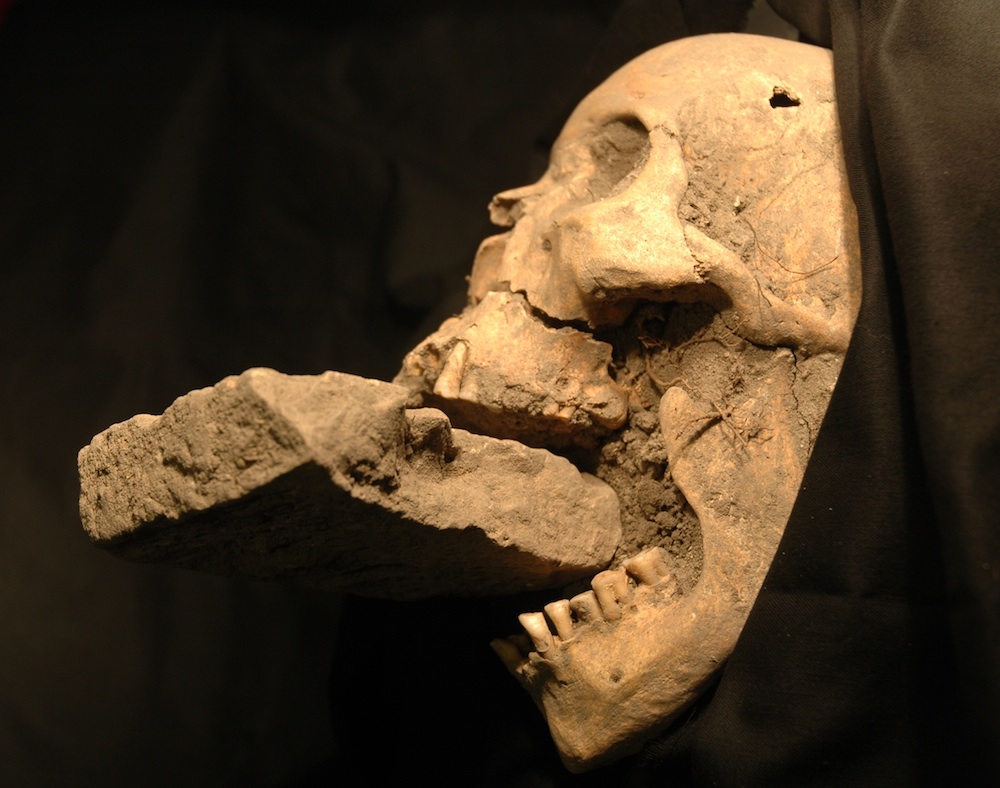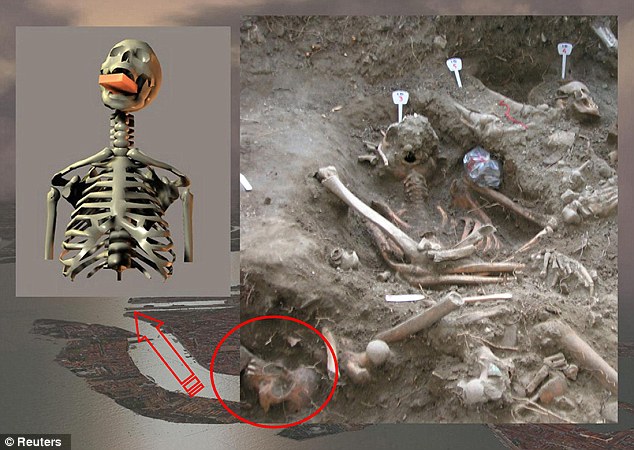The Vampire of Venice: A 16th-Century Skull with a Brick in Its Mouth
In 16th-century Venice, a chilling archaeological discovery was made: a female skull with a brick placed firmly in her mouth. This unsettling find, unearthed on the Venetian island of Lazzaretto Nuovo – which served as a plague cemetery – immediately sparked intense debate and revealed a dark facet of the era’s superstitions surrounding death and disease. The “Vampire of Venice,” as she became known, offers a grim, tangible link to a time when fear of the undead and the devastating impact of epidemics gripped the popular imagination.

The practice of inserting a brick or stone into the mouth of a deceased individual was a specific ritual rooted in the belief that certain corpses could become “revenants” or “vampires.” During outbreaks of devastating diseases like the bubonic plague, mass graves were common. If a body was found bloated (a natural consequence of decomposition) and with blood or fluids around the mouth (also a common post-mortem occurrence), it might be misinterpreted as a sign that the deceased was consuming the shroud or even other corpses, thus spreading the plague from beyond the grave. The brick was intended to “kill” the supposed vampire, preventing it from rising and continuing its malevolent work.

Forensic analysis of the “Vampire of Venice” has provided invaluable insights into these macabre beliefs. The skull belonged to a woman, likely elderly, who died during a severe plague epidemic. The brick was clearly forced into her mouth after death, indicating a deliberate act by gravediggers or those responsible for mass burials. This discovery, while unsettling, serves as a powerful historical artifact, illustrating the profound fear, desperation, and superstitious practices that emerged in the face of widespread death during the plagues that ravaged Europe, particularly in a vulnerable port city like Venice.
